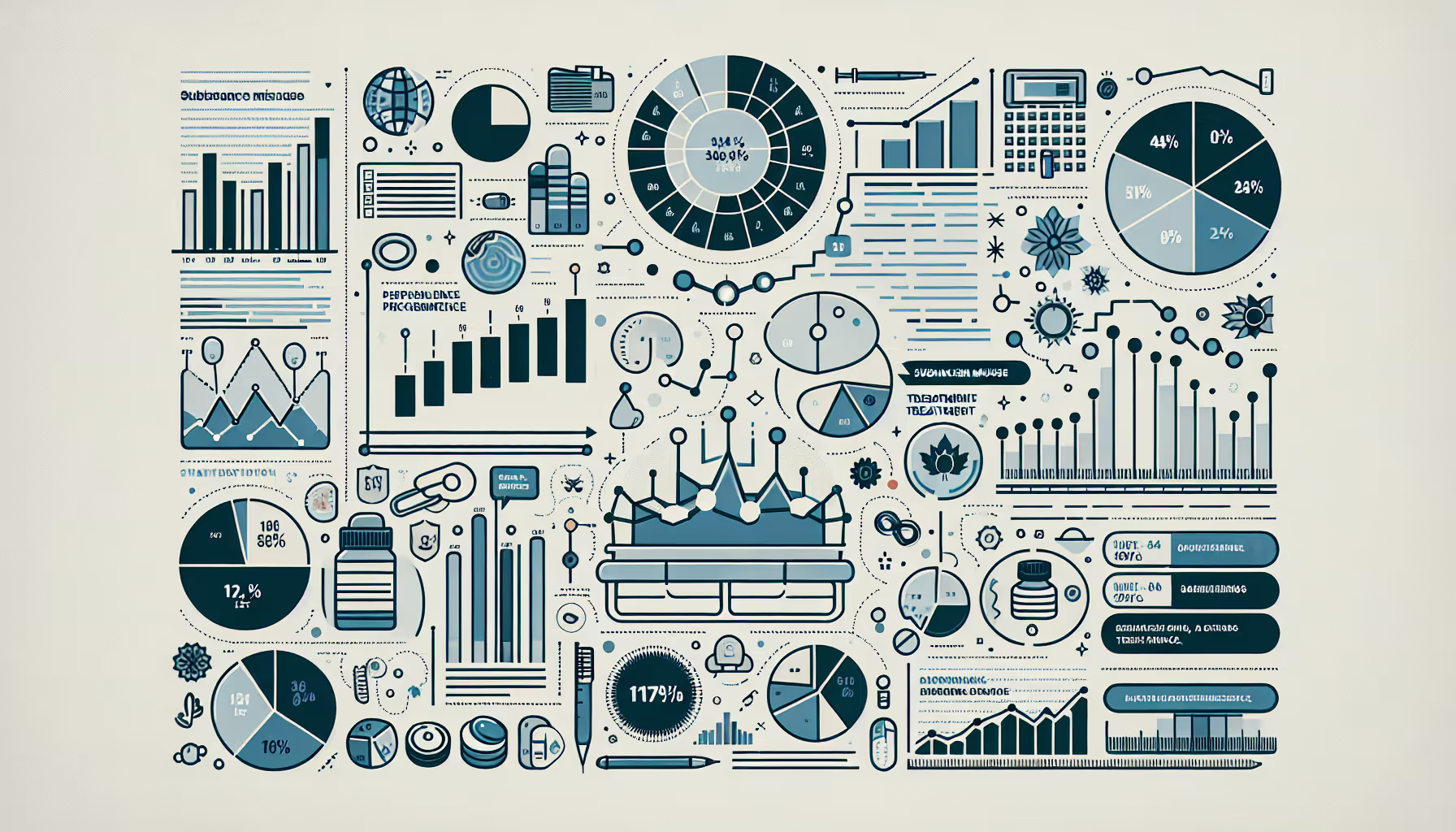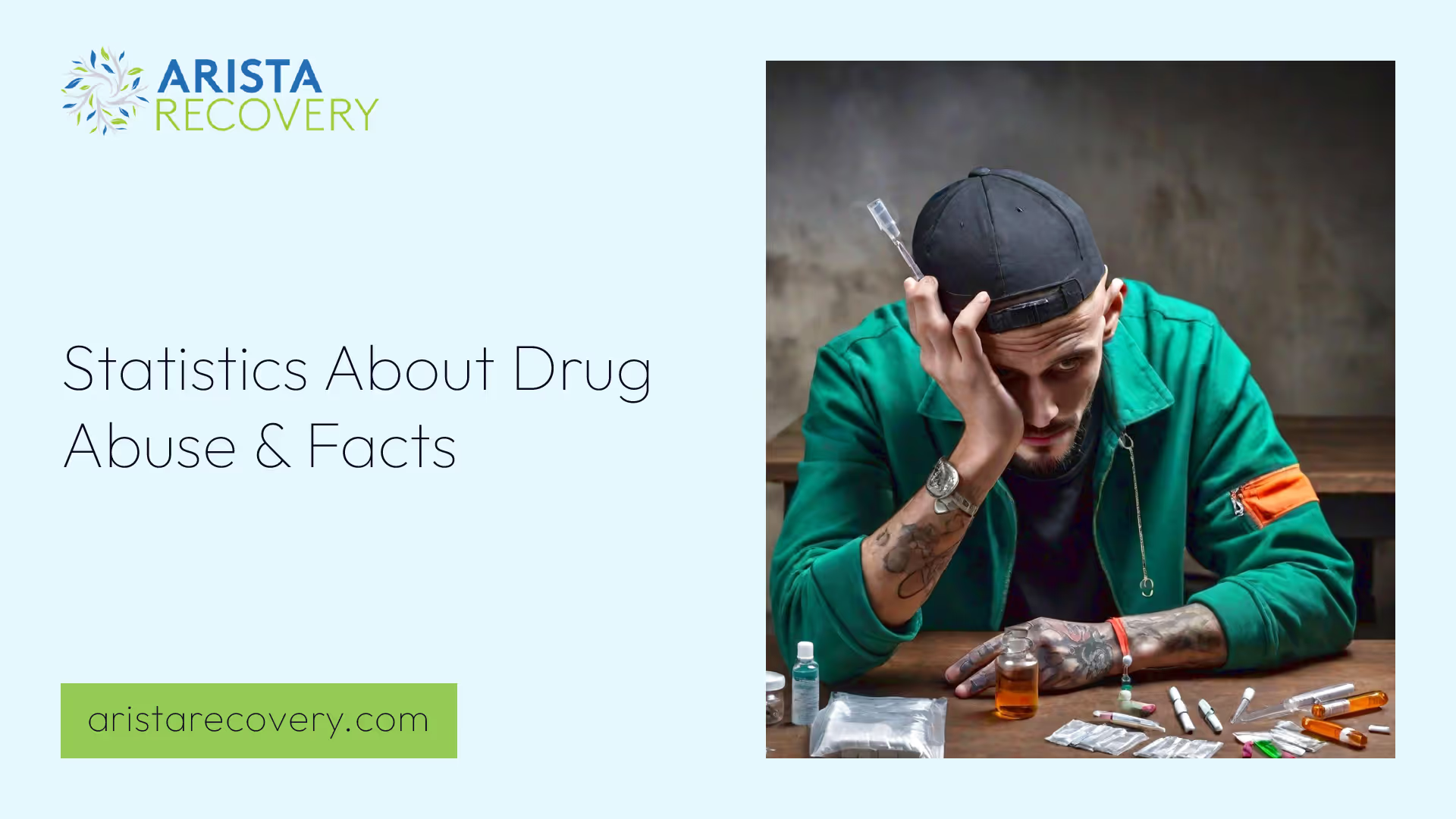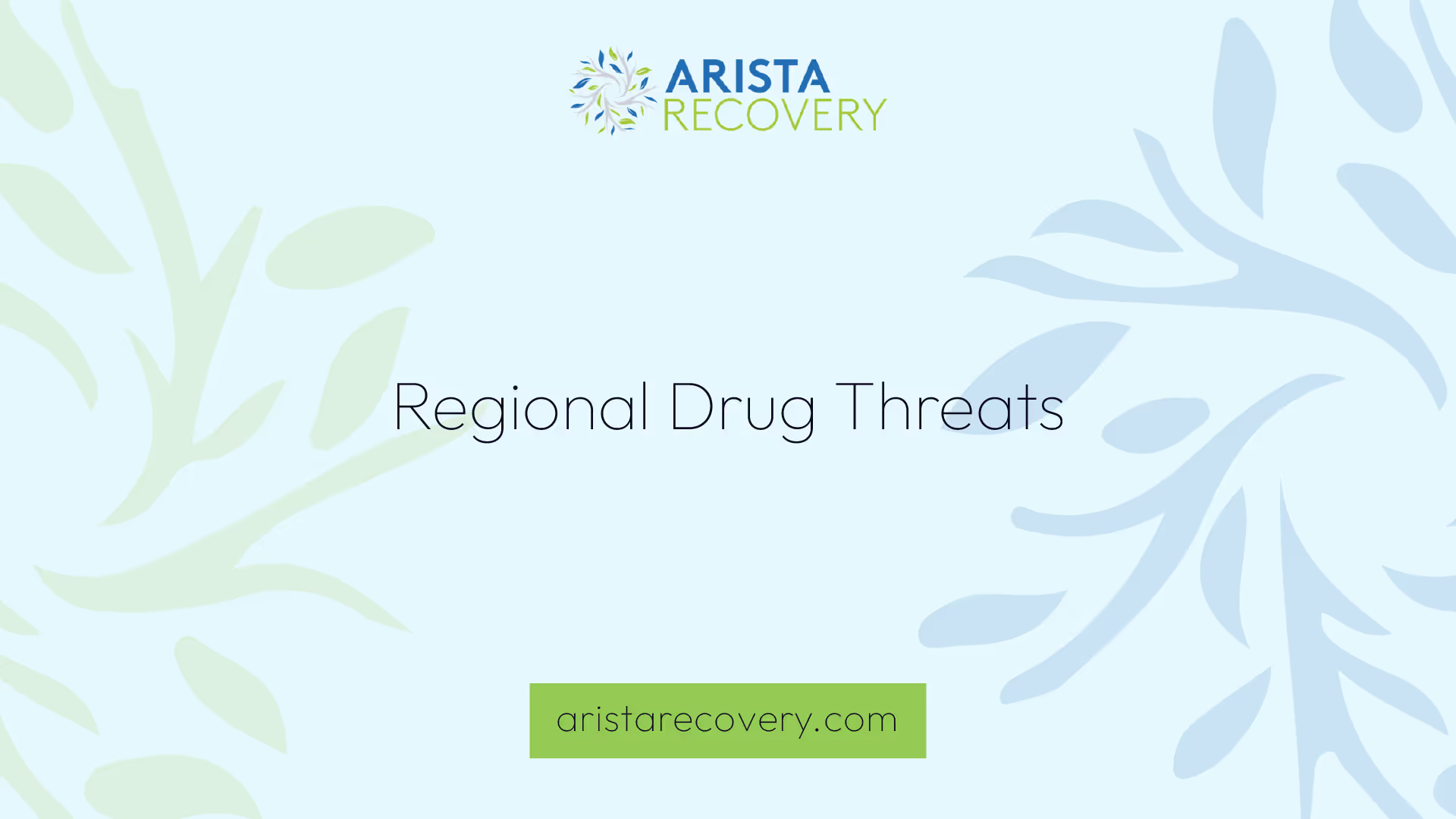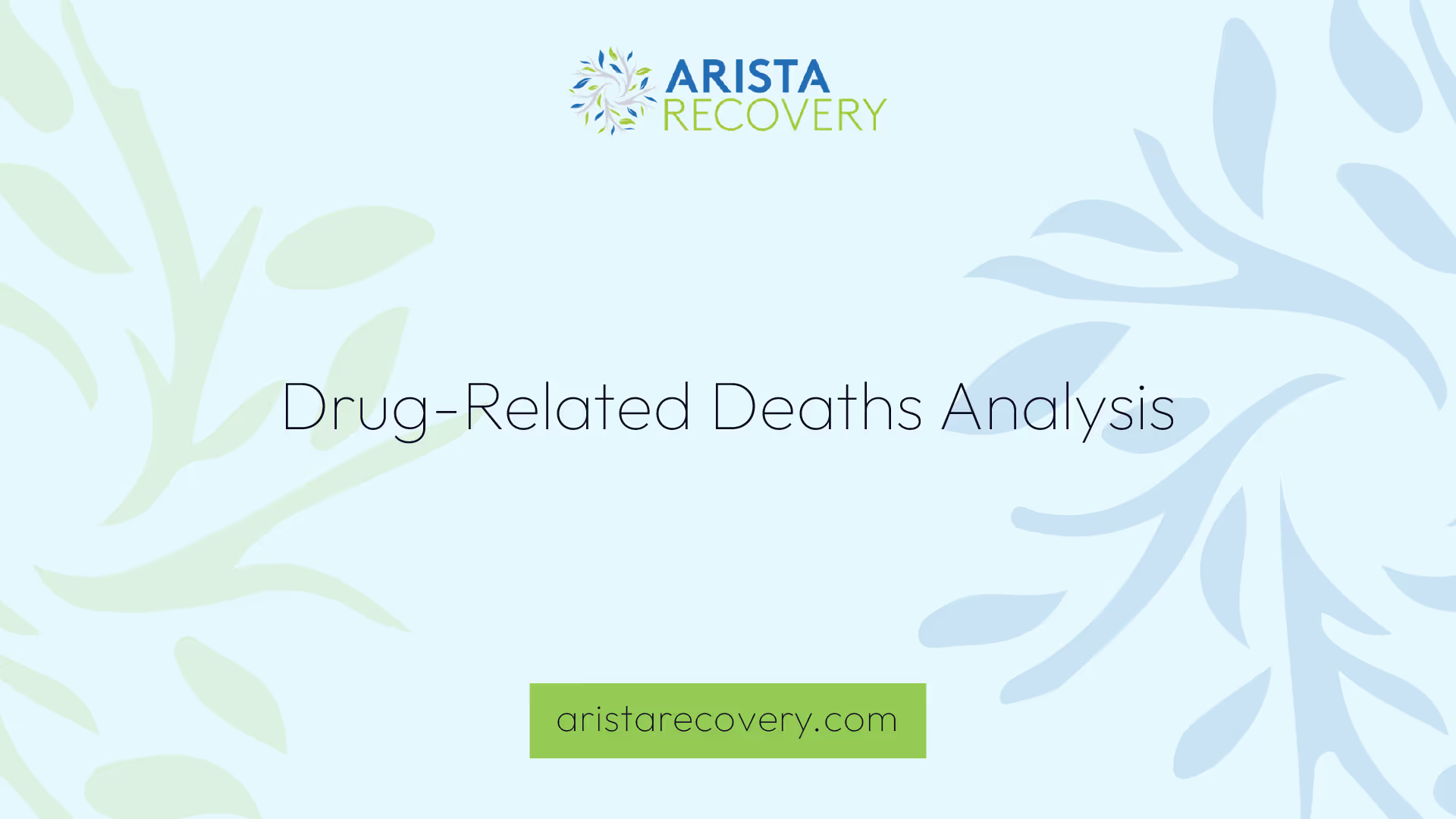Statistics About Drug Abuse & Facts


Drug Abuse Statistics Overview
To fully grasp the severity of the drug abuse issue in the United States, it's crucial to first understand the statistics about drug abuse & facts. These numbers provide a clear picture of the current situation and impact of drug abuse in the country.
Current Drug Use Numbers
As of 2020, the number of current illegal drug users aged 12 years and older in the U.S. stood at 37.309 million. These individuals had used illegal drugs within the last 30 days of the survey being conducted. This statistic underscores the magnitude of the drug abuse problem and emphasizes the urgent need for effective prevention and treatment strategies [1].
Impact of Drug Abuse
The impact of drug abuse extends beyond the individual user and has significant consequences on society as a whole. One of the most damaging impacts is seen in the number of deaths caused by drug overdose. Accidental drug overdose is a leading cause of death among persons under the age of 45.
The financial cost of drug abuse is also staggering. In 2017, the cost of drug abuse in the U.S. was nearly $272 billion. This figure includes costs associated with crime, healthcare needs, lost work productivity and other societal impacts [1].
It's clear from these numbers that drug abuse is a significant problem that requires ongoing attention and resources. For a broader view of addiction issues, you might be interested in our articles on video game addiction statistics & facts, eating disorder statistics & facts, and current alcoholism statistics & facts.
Financial Impact of Drug Abuse
The financial implications of drug abuse extend beyond the individual user and have significant societal costs. This section will provide an analysis of these costs and discuss the allocation of the National Drug Control Budget.
Cost Analysis
According to DrugAbuseStatistics.org, in 2017, the cost of drug abuse in the US was nearly $272 billion. This staggering amount takes into account several factors such as crime-related costs, healthcare needs, lost work productivity and other impacts on society.
These figures underscore the magnitude of the substance abuse problem in the United States and the urgent need for effective intervention and prevention strategies.
Allocation of National Drug Control Budget
In response to the drug abuse crisis, the US government allocates a sizable budget for drug control efforts. In 2020, the National Drug Control Budget requested $34.6 billion to be expended across five areas of drug control functions: operations, prevention, treatment, interdiction, and law enforcement [1].
The Biden-Harris Administration's Unity Agenda further emphasizes the nation's commitment to addressing the mental health crisis and drug overdose epidemic. The Administration has made investments totaling $3.8 billion through the American Rescue Plan and over $800 million through the Bipartisan Safer Communities Act in SAMHSA grant programs. These funds aim to improve access to mental healthcare, prevent overdoses, and save lives.
The financial impact of drug abuse reveals the pressing need for continued investment in prevention, treatment, and recovery programs. To better understand the scope of substance abuse and other related issues, refer to our articles on video game addiction statistics & facts, eating disorder statistics & facts, current alcoholism statistics & facts, and addiction relapse rates in the United States.

Regional Drug Threats
Understanding regional drug threats is crucial in developing effective strategies to combat the issue of drug abuse. This includes insights from law enforcement and identifying the most problematic substances in different regions.
Law Enforcement Perspectives
Law enforcement agencies play a critical role in assessing and addressing regional drug threats. In fact, nearly 70% of law enforcement agencies in the western and midwestern areas of the United States view methamphetamine and fentanyl as the greatest threats to their populations [1]. This perspective is based on the prevalence of these substances in these regions and their associated harm.
Moreover, the extent of the threat can also be gauged by the quantity of illicit substances seized by law enforcement. For instance, over 115 million pills containing illicit fentanyl were seized by law enforcement in the United States in 2023.
Most Problematic Substances
The most problematic substances vary by region, but nationally, methamphetamine and fentanyl are among the most significant threats. These substances are highly addictive and pose serious health risks, including death.
The 2021 National Survey on Drug Use and Health (NSDUH) provides comprehensive insights into substance use in the United States, including estimates by race, ethnicity, and age groups. This data is crucial in identifying the most problematic substances and developing targeted interventions.
If you or someone you know is struggling with substance abuse, immediate help is available by calling or texting SAMHSA's National Helpline at 800-662-HELP (4357) or visiting findtreatment.samhsa.gov. For those in crisis, you can call or text 988 or visit 988lifeline.org.
For more statistics about drug abuse & facts, you can explore various resources on our website. Understanding these statistics is the first step towards raising awareness and advocating for effective policies and interventions.
Research and Monitoring Systems
In order to understand and address the issue of drug abuse, it's crucial to have reliable and robust research and monitoring systems in place. These systems provide vital data and insights that can inform policy decisions, prevention efforts, and treatment strategies. Two of the key systems in this regard are the Monitoring the Future Survey and the National Drug Early Warning System.
Monitoring the Future Survey
The Monitoring the Future (MTF) survey has been a significant source of data on drug and alcohol use among adolescents in the United States since 1975. Conducted by the National Institute on Drug Abuse (NIDA), the survey measures substance use and related attitudes among students nationwide [3].
According to the latest results from the MTF survey, there has been a significant decrease in the percentage of adolescents reporting substance use in 2021. This promising trend underscores the importance of ongoing research and prevention efforts in addressing the issue of drug abuse.
The MTF survey is not only invaluable in tracking trends in substance use among young people, but it also provides insights into their attitudes towards drugs. This information can guide the development of effective prevention strategies and interventions.
National Drug Early Warning System
The National Survey on Drug Use and Health (NSDUH) is another critical research tool in the field of substance use and mental health. Conducted by the federal government since 1971, the NSDUH provides comprehensive statistical information on substance use and mental health in the U.S. civilian, noninstitutionalized population aged 12 or older [2].
The 2021 NSDUH report provides insights into mental health conditions, substance use, and treatment pursuits across the United States. The report includes estimates by race, ethnicity, and age groups, making it the most comprehensive report on substance use and mental health indicators released by the Substance Abuse and Mental Health Services Administration (SAMHSA) to date in 2021.
The data collected through the NSDUH is crucial in addressing mental health and substance use challenges in the country. It can inform policy decisions, allocate resources, and develop targeted interventions to reduce the impact of drug abuse.
The information gathered by research and monitoring systems like the MTF survey and the NSDUH plays a critical role in our understanding of drug abuse. By tracking trends and attitudes, these systems provide the data needed to formulate effective responses to the issue of drug abuse. For more statistics and facts about related topics, check out our articles on video game addiction statistics & facts, eating disorder statistics & facts, and current alcoholism statistics & facts.

Drug-Related Deaths Analysis
Analyzing drug-related deaths provides critical information about the severity of the drug abuse problem in the United States. This analysis includes a look at overdose statistics and the drugs most commonly involved in these fatal incidents.
Overdose Statistics
Accidental drug overdose is a leading cause of death among persons under the age of 45, according to DrugAbuseStatistics.org. The Centers for Disease Control and Prevention collects information on deaths involving many commonly used drugs, including drug overdose death rates [3].
The 2021 National Survey on Drug Use and Health (NSDUH) report provides insights into mental health conditions, substance use, and treatment pursuits in the United States. A notable statistic from this report is the number of people who died from overdoses. This serves as a stark reminder of the importance of prevention, treatment, and recovery services.
Commonly Involved Drugs
The drugs most often involved in overdose deaths provide insights into the types of substances posing the greatest threats. Over 115 million pills containing illicit fentanyl were seized by law enforcement in the United States in 2023. Fentanyl and other synthetic opioids continue to be the key driver of the ongoing opioid crisis, with a significant increase in overdose deaths involving these drugs.
The Biden-Harris Administration's Unity Agenda focuses on addressing the nation's mental health crisis and drug overdose epidemic, with investments totaling $3.8 billion through the American Rescue Plan and over $800 million through the Bipartisan Safer Communities Act in SAMHSA grant programs to improve access to mental healthcare, prevent overdoses, and save lives [2].
By understanding the statistics about drug abuse and facts, one can realize the scale of this crisis, which can lead to more comprehensive approaches to prevention, treatment, and recovery. For more information on related topics, consider exploring our articles on video game addiction statistics & facts, eating disorder statistics & facts, and current alcoholism statistics & facts.
Long-Term Effects of Drug Abuse
Understanding the long-term effects of drug abuse is essential to fully comprehend the gravity of this issue. This section will specifically focus on the effects of alcohol and opioid misuse.
Alcohol Impact
Excessive alcohol use can have detrimental effects on the entire body, potentially leading to death. Chronic alcohol consumption can lead to a myriad of health complications, including liver disease, cardiovascular problems, respiratory issues, and various cancers. Neurological complications, such as memory loss and mood disorders, are also common in individuals struggling with alcoholism.
According to the American Addiction Centers, alcohol's impact can be detrimental to the user's health and can contribute to an increased risk of premature death. These effects underscore the importance of seeking help for alcoholism. For more information on alcoholism and its impact, refer to our article on current alcoholism statistics & facts.
Opioid Misuse Consequences
Chronic misuse of opioids also has severe consequences on the body's organs and systems. Long-term opioid use can result in physical dependence and withdrawal symptoms when the drug is not taken. It can also lead to chronic constipation, sexual dysfunction, and weakened immune system function. Over time, individuals may develop a tolerance to opioids, requiring larger or more frequent doses to achieve the same effect, leading to an increased risk of overdose.
Furthermore, opioids have a significant impact on mental health. Long-term opioid use can contribute to depression, anxiety, and other mental health disorders. It can also lead to social and economic consequences, including job loss, relationship problems, and financial difficulties.
As mentioned by the American Addiction Centers, the adverse effects of chronic opioid misuse underscore the need for effective treatment and intervention strategies. For detailed statistics on addiction relapse rates in the United States, visit our article on addiction relapse rates in the United States.
The long-term effects of drug abuse, whether it is alcohol, opioids, or other substances, can be devastating both physically and mentally. The statistics about drug abuse & facts highlight the importance of prevention, early intervention, and effective treatment strategies in addressing this public health issue.
Specific Drug Effects
Understanding the specific effects of different drugs is crucial in the broader discussion of drug abuse. In this section, we'll focus on the long-term consequences associated with methamphetamine and marijuana use.
Methamphetamine Consequences
Methamphetamine, commonly referred to as meth, is a powerful and highly addictive stimulant. Long-term meth use is associated with adverse effects that can significantly impact one's physical and mental health.
Chronic meth users often face severe dental problems and tooth decay, a condition colloquially known as "meth mouth". Weight loss and skin sores are also common physical consequences of regular meth use [4].
The mental health implications of meth use can be even more severe. Studies indicate that serious psychotic consequences from long-term meth use, such as paranoia, hallucinations, and delusions, can last for months or years after meth use stops [4].
These long-lasting effects highlight the importance of prevention and early intervention when it comes to meth use. For more insight into the broader issue of substance abuse, check out our article on addiction relapse rates in the United States.
Marijuana Long-Term Impact
Marijuana, made from the hemp plant Cannabis sativa, contains delta-9-tetrahydrocannabinol (THC), the main psychoactive component that alters the user's mental state [5].
Chronic marijuana use can have lasting consequences on physical and mental health, with potential long-term effects dependent on the method of use [4]. Some users report cognitive impairment, while others may experience physical symptoms such as respiratory issues.
It's essential to remember that while marijuana is legal in many states for medical and recreational use, it's not without risks. As with any substance, misuse can lead to dependence and other health issues.
These specific drug effects underscore the importance of understanding the realities of drug misuse and its impact on individual health. By being informed, we can better support efforts to prevent and treat drug misuse. For more statistics about drug abuse & facts, explore our articles on current alcoholism statistics & facts and eating disorder statistics & facts.
Government Actions and Programs
The severity of the drug abuse problem in the United States has led to significant government actions and programs aimed at combating this issue. In this section, we will explore the National Drug Control Budget and specific initiatives introduced by the Biden-Harris Administration.
National Drug Control Budget
The National Drug Control Budget is a significant part of the U.S. government's effort to address drug abuse. This budget supports a wide range of activities, including operations, prevention, treatment, interdiction, and law enforcement. In 2020, the budget requested $34.6 billion to combat drug abuse across these five areas [1].
The specific allocations for each area reflect the priorities of the government in addressing the drug problem. For instance, the funds dedicated to prevention and treatment show an understanding of drug abuse as a public health issue, requiring comprehensive solutions beyond law enforcement.
Biden-Harris Administration Initiatives
The Biden-Harris Administration has made addressing the nation's mental health crisis and drug overdose epidemic a key part of their Unity Agenda. Investments totaling $3.8 billion have been made through the American Rescue Plan, along with over $800 million through the Bipartisan Safer Communities Act in SAMHSA grant programs.
These programs aim to improve access to mental healthcare, prevent overdoses, and save lives.
These government actions and programs demonstrate a commitment to addressing the drug abuse problem in the United States. By investing in prevention, treatment, and law enforcement efforts, the government is taking a multi-faceted approach to this complex issue. For more information on related topics, you can explore our articles on video game addiction statistics & facts, eating disorder statistics & facts, current alcoholism statistics & facts, and addiction relapse rates in the united states.
References
[1]: https://drugabusestatistics.org/
[2]: https://www.hhs.gov/about/news/2023/01/04/samhsa-announces-national-survey-drug-use-health-results-detailing-mental-illness-substance-use-levels-2021.html
[3]: https://nida.nih.gov/research-topics/trends-statistics
[4]: https://americanaddictioncenters.org/health-complications-addiction/permanent-effects
[5]: https://nida.nih.gov/research-topics/commonly-used-drugs-charts
You’re not alone in this.
When mental health challenges and addiction intersect, it can feel isolating. At Arista, we offer compassionate, evidence-based, and trauma-informed care to help you heal, grow, and move forward.
You’re not alone in this.
When mental health challenges and addiction intersect, it can feel isolating. At Arista, we offer compassionate, evidence-based, and trauma-informed care to help you heal, grow, and move forward.
Support that moves with you.
You’ve taken a brave first step. At Arista Recovery, we’re here to help you continue with best-in-class care designed for long-term healing and support.
.webp)






